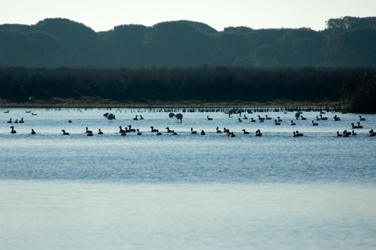Wetlands are one of the most threatened habitats, but they continue to be destroyed and degraded all over the world. In recent years, various studies have argued that artificial wetlands can compensate for the loss of natural ones, and facilitate conservation of waterbirds. In this study waterbird communities are compared in a set of natural, restored and artificial wetlands within the Doñana Natural Space, which are well known for their birds. Several measures of diversity were used, including the phylogenetic relatedness and the proportion of species that were threatened at national or international levels. Whatever the measure of diversity, artificial wetlands were consistently less diverse than restored or natural wetlands, with hardly any differences between the latter two. Natural wetlands are essential for biodiversity conservation, but restored wetlands can have similar value and assure the maintenance of key ecological processes. In conclusion, when costs are similar, resources for wetland conservation are better invested in restoration than in creating new wetlands. Caution is urged when assuming that artificial wetlands can compensate for the loss of natural ones. informacion[at]ebd.csic.es: Sebastián-González & Green (2016) Reduction of avian diversity in created versus natural and restored wetlands. Ecography DOI: 10.1111/ecog.01736
http://onlinelibrary.wiley.com/doi/10.1111/ecog.01736/abstract








 Open Call for Research Projects in ICTS-Doñana!
Open Call for Research Projects in ICTS-Doñana!


